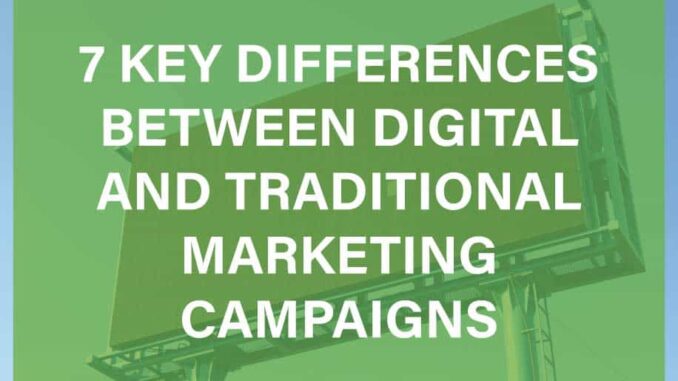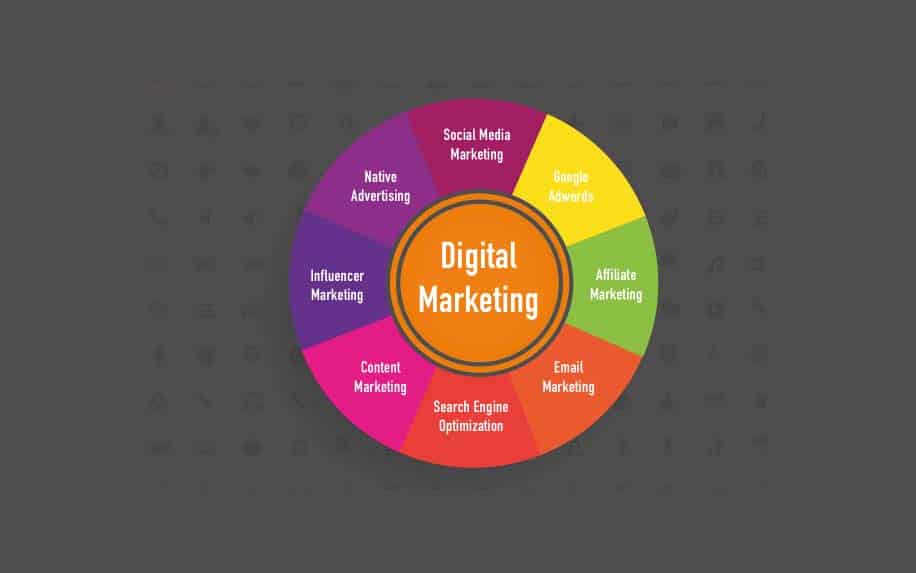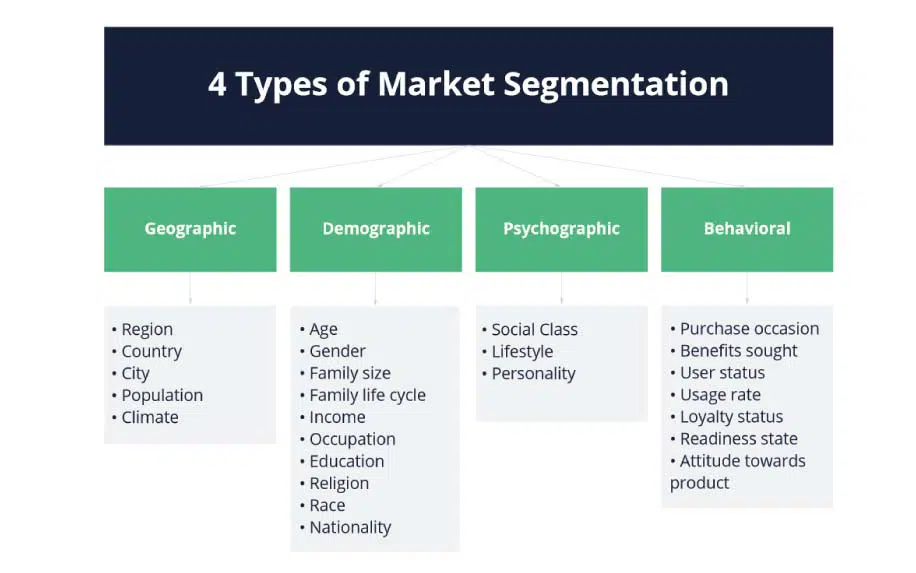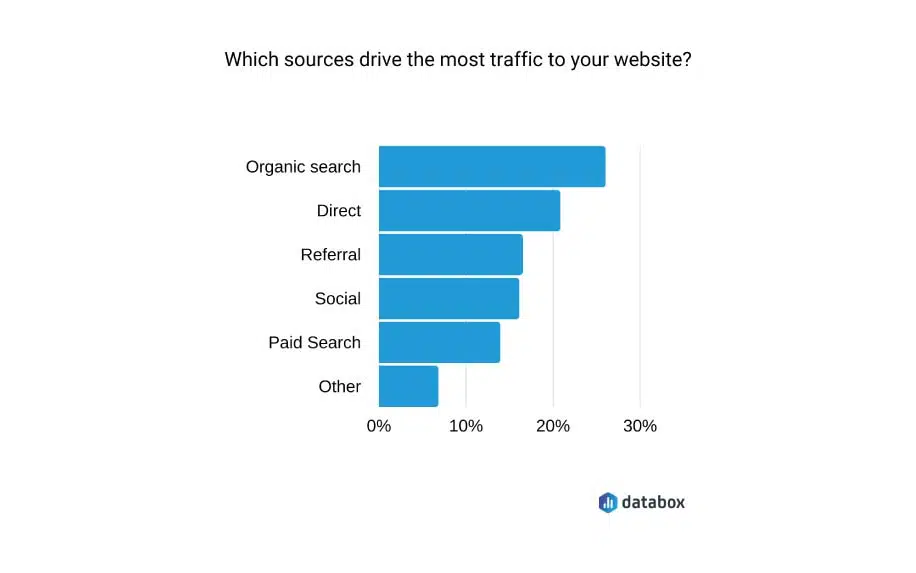
How are digital marketing campaigns different from traditional offline campaigns?
What makes digital marketing stand out from traditional advertising like magazine, newspaper, and TV adverts? There are many advantages that digital marketing has over traditional, but there are also a few downfalls.
These days, digital marketing has essentially overtaken traditional, real-world campaigns. Lower costs and new technologies mean that even the smallest businesses can compete with international brands with the right marketing strategy.
Well-planned and executed digital marketing campaigns are essential for brands looking to connect with audiences and achieve key business goals online. In this comprehensive guide, we will walk through the elements of an effective digital campaign strategy.
Digital marketing campaigns are coordinated activities that use digital channels to reach a specific audience and achieve a marketing goal. Digital marketing campaigns can be used to achieve a variety of goals, including:
- Brand awareness
- Lead generation
- Sales
- Customer retention
Overall, though, digital marketing is quite versatile and has many applications.
Today, we will be taking a closer look at how digital marketing differs from traditional marketing. Specifically, we’ll cover how they differ in terms of aims, approaches, and indicators of success.
First, though, let’s start with the basics.
What are Digital Marketing Campaigns?
Digital marketing campaigns encompass several different methods that you can use to build up your following and get your business noticed by as many people as possible.
Some of the most common digital marketing channels include:
- Social media,
- Pay-per-click (PPC) ads,
Types of digital marketing campaigns:
There are many different types of digital marketing campaigns, but some of the most common include:
Search engine optimization (SEO) campaigns are designed to improve a website’s ranking in search engine results pages (SERPs). This can help to increase website traffic and brand awareness.
Pay-per-click (PPC) campaigns: PPC campaigns involve paying search engines to display ads for your website when people search for relevant keywords. This can be a quick way to generate traffic and leads.
Social media marketing campaigns: Social media marketing campaigns involve using social media platforms to connect with potential and existing customers. This can help to increase brand awareness, generate leads, and drive sales.
Email marketing campaigns: Email marketing campaigns involve sending emails to subscribers with promotional offers, educational content, and other information. This can be a very effective way to nurture leads and convert them into customers.
Content marketing campaigns: Content marketing campaigns involve creating and distributing high-quality content relevant to your target audience. This can help to attract visitors to your website, generate leads, and build trust with potential customers.
You’ll also need various digital marketing tools for each channel to run effective campaigns.

What are the Differences Between Traditional Marketing and Digital Marketing?
There are several crucial differences between traditional marketing and digital marketing campaigns. Many of these weigh in the favour of newer techniques and strategies. All the same, digital marketing also presents some unique challenges.
While traditional and digital marketing share the same primary objective of engaging audiences to drive awareness, consideration and sales, there are distinct differences in their approaches:
| approaches | Traditional Marketing | Digital Marketing |
|---|---|---|
| Examples | Print ads, TV/radio spots, direct mail, tradeshows, billboards | SEO, social media, email, content marketing, PPC ads |
| Benefits | Mass reach, authoritative messaging, tangible | Lower cost, data-driven optimization, interactive engagement, personalization |
| Drawbacks | Hard to measure ROI, higher cost, less customer data | Platform algorithm changes, fragmented media, and more expertise needed |
Let’s take a look at some of the key differences between traditional marketing and digital marketing.
1. Results of Digital Marketing Campaigns Are Easily Measured
Individual actions, or entire campaigns, are easily measured to determine effectiveness. What makes digital marketing more efficient than traditional offline marketing is that it’s very easy to measure the results of a campaign.
For instance, you can’t tell how often people saw an advert on the train and whether it encouraged them to buy your product. With a digital marketing campaign, however, there is little mystery regarding performance.
You can see how many people opened an email then clicked links, and how many impressions your social media and pay-per-click ads generated, as well as their click-through rate.
Depending on how robust and sophisticated your data analytics tools are, you can also determine what types of marketing an individual customer is most responsive to and what items they are most likely to purchase.
It is extremely difficult to do this with offline marketing methods other than an ad campaign being particularly responsive or unresponsive.
2. Understand Customer Behaviour
With digital marketing, you can measure the lifetime value (LTV) of an individual customer to create more targeted campaigns.
It’s virtually impossible to know how often an individual has seen your billboards, TV placement, or newspaper and magazine inserts, let alone when they became a paying customer.
But with digital marketing campaigns, LTV is the measure of how much revenue that individual customer has earned your business ever since they first began purchasing from you.
Related metrics include how often a customer purchases, what marketing technique they are the most responsive to, average spending per order, and other relevant information to create more targeted campaigns.
3. Audience Segmentation
Digital marketing makes it easy to personalize email campaigns and segment customers by different criteria.
It isn’t that difficult to divide your customer base into segments according to whatever criteria you set, like location, average spend per order, or the product lines they typically purchase.
Segmentation can make digital marketing campaigns more effective because if only a certain subset of your customers are interested in a new product, you won’t need to risk losing engagement by notifying your entire email list.
Because segmentation data is easy to measure, you can create as many or as few segments of customers as needed.

You can easily test different versions of your content for free or very little cost.
A/B testing, also called split testing, entails dividing up groups, such as your email list sign-ups and social media followers and sending the groups different versions of the same content.
It can be an email message with different logos and colour schemes or a social media post advertising the same product using a different image.
This type of testing can show you the differences in clicks and conversions to get an idea of what your customers are more likely to click on and, therefore, purchase.
With traditional advertising, it is often expensive and time-consuming to get feedback from existing and potential customers on how they react to different print or TV ads.
5. Better Customer Relationships
The digital world we live in today has opened up communications between businesses and customers.
Social media is often a very public way of doing customer service if an unhappy customer wants to tell the world about their experience or when a customer simply wants to make a suggestion.
Running an ad campaign through social media using your followers and paid placement often results in immediate engagement.
People will leave comments and ask questions, which are just what you need for a product launch that you hope will be lucrative. Traditional adverts may result in receiving feedback from
Digital marketing campaigns can be localized easily. Digital marketing is versatile because you can tailor your campaigns for global, national, or local audiences. It is easy to segment your customers by postcode to county or country the entire region.
When optimizing your website and content for local SEO, you can use the name of the area you are targeting and its variations as keywords for ultimate efficacy.
There are other actions you can take, like registering for local business directories and getting placed on Google Maps. If you desire a more global presence, you’ll want to focus more on SEO, content, and social media as a means to appeal to potential customers around the world.
Traditional offline marketing can have the advantage of repetition. When you use traditional methods such as newspapers or billboards that only a local audience sees, this isn’t great if your goal is to attain an enhanced global reach.
However, if your goal is to get a local audience, it can end up being more effective than a digital campaign by itself.
Seeing your billboard or other sponsored placement several times in person can get people to remember your business more easily.
7. Getting Traffic to Your Ads, Content, or Social Media Pages Presents Challenges
Your website and other pages need traffic to be effective. When you buy a newspaper, magazine, billboard, or TV advert space or you have a reporter write about you, there is more or less a guarantee that many people are going to hear about your business.
When it comes to digital PPC ads, you can measure the results of the campaign, but you might not see the kind of results that you were hoping for if your business is new and doesn’t have much of a presence yet (online or offline).
This is where traditional offline methods have an advantage if you don’t have much of a following. This is particularly true from an SEO standpoint if your site is not SEO-optimized and if people just aren’t searching online for your offering.
Methods like affiliate and influencer marketing meet traditional marketing in the middle to help increase your visibility.
Because generating traffic organically is a major challenge, other methods like affiliate and influencer marketing are a combination of digital and traditional marketing to help you get the exposure that you need.

By setting up your affiliate portal or using an existing network, bloggers and other website owners looking to make money online are happy to get affiliate links to earn passive income. At the same time, you capitalize off of their pre-existing followings.
Influencer marketing works similarly to getting press mentions in that an influencer’s massive following is introduced to your business because they genuinely like what you offer.
Conversely, you can also sponsor a blog post through an influencer to overcome the challenge of insufficient traffic.
How Digital Marketing is Different from Traditional Marketing
In summary, our world has become more digital and investing in digital marketing campaigns is simply what makes sense.
The digital marketing landscape has taken a lot of guesswork out of marketing campaigns, given how easy it is to measure the results of both actual campaigns and how responsive customers are over their lifetimes.
Digital marketing campaigns offer more immediate reactions than traditional advertising and can increase customer engagement.
However, the major drawback with digital marketing is that building up the following and generating enough traffic to make digital marketing techniques incredibly effective can take a long time.
Offline methods like placing adverts in newspapers and magazines only require paying fees to be seen by all of the publication’s subscribers. They can be more effective in getting your name out there, at least initially.
Overall, digital marketing can be both fun and challenging in growing your online presence.
Gaining followers and keeping them engaged is key to succeeding in digital marketing campaigns, and it definitely can’t hurt to use a mixture of digital and offline marketing methods together.
Defining Campaign Goals and KPIs
The first step is outlining concrete campaign goals and KPIs that align with overall business objectives. Potential digital campaign goals include:
- Increase website traffic by [x] amount
- Generate [y] new leads
- Achieve [z] sales or conversions
- Boost brand awareness and impressions by [x]%
KPIs to track must directly relate to stated goals, such as website sessions, lead conversion rate, ROAS, etc. These will determine campaign success.
Researching and Defining Your Audience
Thorough audience research and persona development ensure your campaign messaging and content will resonate. Key elements to define include:
- Demographic and psychographic attributes
- Pain points, motivations and goals
- Content consumption habits and digital behaviour
- Objections and how to overcome them
This enables personalization and hyper-targeting of campaigns. Utilize analytics and existing customer data to identify high-potential audience segments.
Crafting The Campaign Strategy and Channels
The overall campaign storyline and mechanisms to achieve goals must align with audience attributes and media consumption. Potential digital channels include:
- Paid Search -targets users seeking solutions with buying intent
- Social Media Ads – expands reach via highly engaging platform
- Content Marketing – attracts audiences with relevant and valuable information
- Email Marketing – nurtures subscribers through personalized journeys
- Affiliate Marketing – leverages influencer reach for awareness
Optimization towards key campaign KPIs will determine the channel mix. Creative assets and messaging must be tailored for each channel while maintaining brand consistency.
Executing The Campaign Creatively
Compelling creativity is essential for breaking through the digital noise. Focus on video and visual content with clear calls to action. Ensure assets are on-brand, mobile-optimized, and designed for each channel and audience segment. Conduct A/B testing to improve performance.
Tracking and Optimizing Campaign Performance
Utilize analytics to monitor performance daily. Assess metrics like CTR, CPL, conversions, etc., to identify opportunities. Implement optimizations like adjusting targeting, bidding, creatives, offers, and channels. A/B test elements to improve KPIs. Add new high-potential channels. Expand efforts driving the highest ROI.
By taking a strategic approach involving thorough planning, audience definition, creative optimization, and performance tracking, brands can execute digital marketing campaigns that deliver real results. Proper allocation of budget towards high-performing initiatives moves the needle on KPIs.
Benefits of digital marketing campaigns:

Digital marketing campaigns offer several benefits for businesses of all sizes, including:
- Reach a wider audience: Digital marketing campaigns allow businesses to reach a wider audience than they could through traditional marketing channels, such as print advertising and television commercials.
- Generate leads: Digital marketing campaigns can help businesses generate leads by attracting potential customers to their websites and landing pages.
- Drive sales: Digital marketing campaigns can help businesses drive sales by converting leads into customers and encouraging repeat purchases.
- Improve brand awareness: Digital marketing campaigns can help businesses improve brand awareness by getting their name and message in front of more people.
- Build customer relationships: Digital marketing campaigns can help businesses build relationships by engaging them online and providing valuable content.
How to create a successful digital marketing campaign:
To create a successful digital marketing campaign, it is important to follow these steps:
- Define your goals: What do you want to achieve with your digital marketing campaign? Are you trying to increase brand awareness, generate leads, drive sales, or something else? Once you know your goals, you can develop a strategy.
- Research your target audience: Who are you trying to reach with your digital marketing campaign? Once you know your target audience, you can tailor your messaging and targeting accordingly.
- Choose the right channels: Which digital channels are your target audience using? Once you know which channels your target audience uses, you can focus your marketing efforts on those channels.
- Create high-quality content: Your content should be informative, engaging, and relevant to your target audience.
- Track and measure your results: It is important to track and measure the results of your digital marketing campaign to see what is working and what is not.
Conclusion:
Digital marketing campaigns can be very effective for businesses to reach their target audience, generate leads, drive sales, and improve brand awareness. By following the steps above, businesses can create successful digital marketing campaigns to help them achieve their business goals.
If you’d like to learn more about creating incredible digital marketing campaigns, contact ProfileTree today.
The post Traditional and Digital Marketing Campaigns: A Comprehensive Guide – 7 Key Differences appeared first on ProfileTree.

Leave a Reply